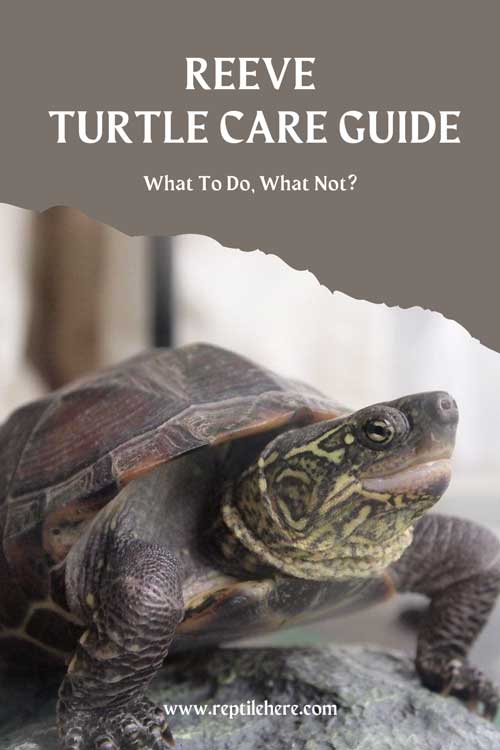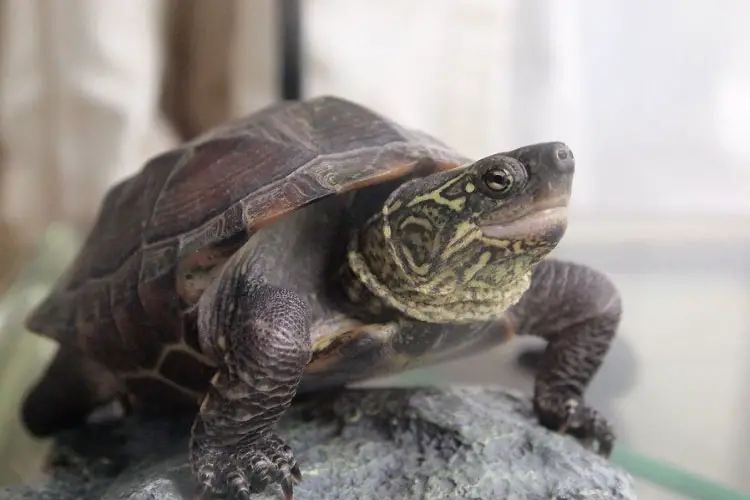Reeves Turtle Care Guide – What To Do, What Not?
Have you ever seen a Reeve turtle? If you haven’t, you’re in for absolute pleasure. These age-old animals are some of the most charming and unique creatures in the animal kingdom. The unique morphology of this species is matched only by its intelligence.
A Reeves turtle is an excellent choice if you’re considering adding a turtle to your household. They’re small, only reaching about 4-6 inches as adults, so they don’t require much space. And compared to other turtles, they’re relatively easy to care for. Today, we’ll present what you must understand to care properly with this reeves turtle sheet.
Basic Info About Reeves Turtle
Contents
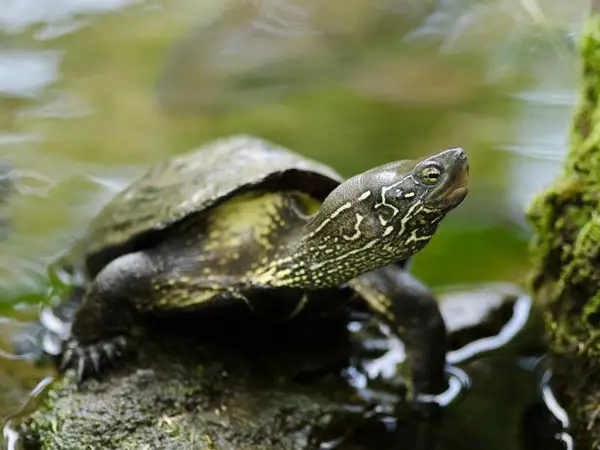
| Scientific Name | Chinemys Reevesii |
| Common Name | Reeves Turtle, Chinese three-keeled pond turtle, Chinese pond turtle, |
| Adult Size | 100mm or 4.5” |
| Max Size | 9 Inches |
| Lifespan | 10-15 Years |
| Diet | Meat products, aquatic foods, and live food. |
| Range | North and South Korea, Central and Eastern China, Taiwan and Japan |
| Behavior | Responsive and Active |
| Clutch Size | Two to six eggs |
| Legal to Keep in the USA | Some US states expressly prohibit turtles or tortoises as pets. In contrast, others do not place any such restrictions on their residents. |
| Extinction Status | M. Reevesii is explicitly listed as critically endangered by the IUCN. |
Are Reeves Turtles Easy to Take Care of?
Reeves turtles are considered one of the more accessible turtles to take care of. They have moderate needs and typically require a large enclosure filled with lots of nesting space and water dishes.
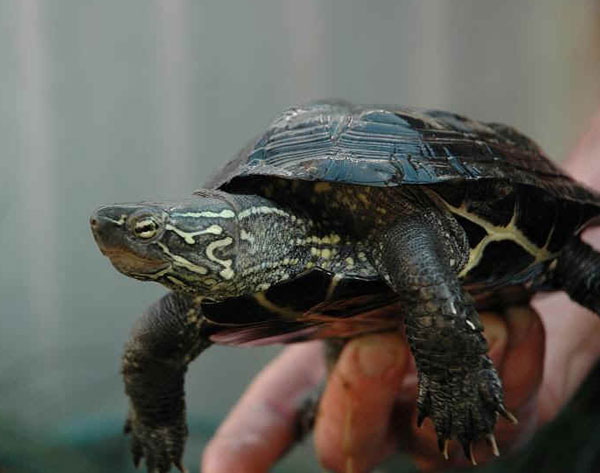
They also benefit from basking areas where they can warm up their bodies and wood chips or branches to climb on. In addition, the care of reeves turtle is a broad-spectrum vitamin supplement every month, along with varied food items. It includes insects, fruits/veggies, small amounts of meat (fish or chicken), and hay cubes.
How to Take Care of a Reeves Turtle?
Reeves turtles are one of the world’s most commonly kept turtle species. The reeves turtle care is one of the easiest pet caring, provided you know what to do. This reeves turtle care sheet will guide you on how to take care of a reeves turtle:
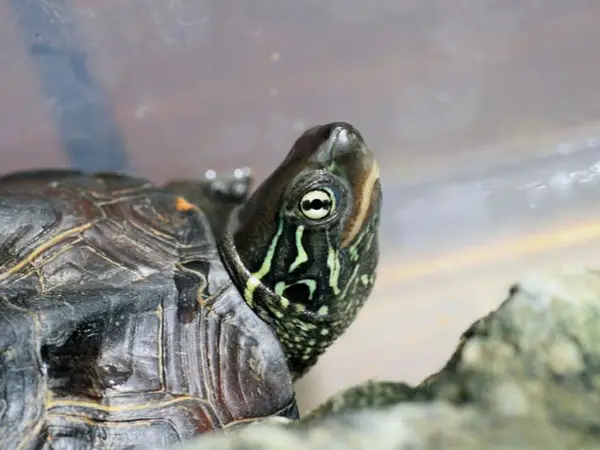
Consider Their Captive Habitat
Reef turtles are a species native to the Indo-Pacific region. They are familiar with fresh and saltwater environments and like habitats rich in vegetation and algae.
When you bring a reeves turtle home, it’s essential to ensure its captive environment is as similar as possible to the natural environment where it was born and raised. It means providing a wide variety of plants, rocks, logs, and other structures for your turtle to climb on and explore. It’s also essential to provide plenty of hiding places, so your turtle can relax and escape potential threats.
The IUCN lists a mature reeves turtle as vulnerable rather than endangered. Their population has declined due to human activity, such as coastal development and collecting their eggs for food or commerce. You can help preserve the reef turtle population by considering their captive habitat when purchasing a pet turtle.
At least five liters of water are required for even a single baby or reeves turtle. It does not refer to a tank that holds only 5 gallons of water but a larger container that can save at least 10 or 15 gallons and has been filled only halfway.
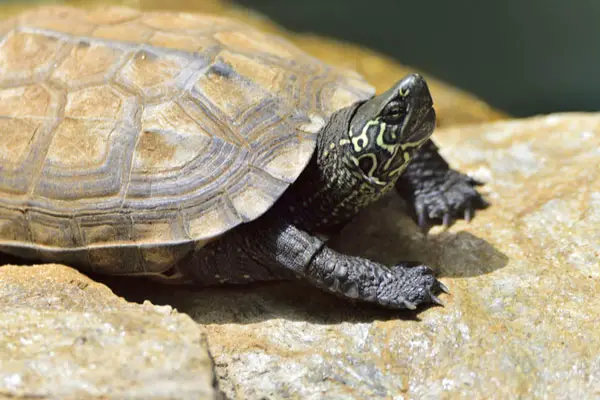
If you’re caring for more than one turtle hatchling, you’ll need to add another 2 to 3 liters of water. At least 20 gallons of water for the first turtle and an extra 10 gallons of water for each successive turtle should be provided as the turtles reach adulthood and beyond.
When choosing a turtle home for your reeves turtle, you should make sure that it has:
- A considerable enough space to roll around in.
- A basking area where the turtle can sunbathe.
- A dry area where they can retreat during rain or humidity.
- Plenty of vegetation and algae to eat.
Consider the Tank’s Lighting & Temperature
To provide your turtle with the most suitable possible environment, make sure that its tank has at least two full-spectrum fluorescent tubes (or equivalent) positioned so that they illuminate at least 80% of the tank’s interior. Ensure the tubes are kept at an angle to emit light horizontally and vertically. You can also set up a heat pad or basking spot in the tank to help keep it warm.
The water, air, and basking spot should all have different temperatures. The ideal temperatures for a reptile’s environment are 75–85 degrees Fahrenheit for the atmosphere, 85–95 degrees Fahrenheit for the basking spot, and 70–80 degrees Fahrenheit for the water.
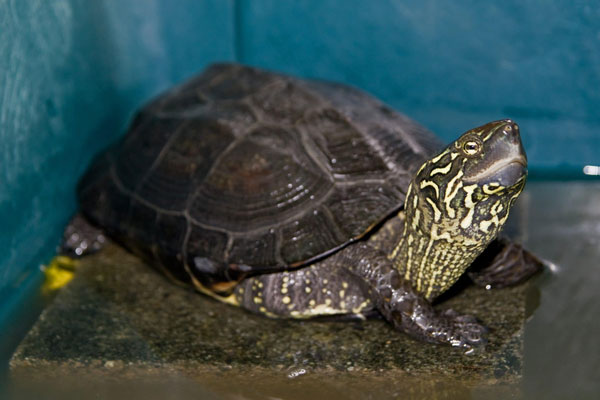
It is vital to remember the temperatures inside an aquarium, especially if a hood or cover has been installed. It will likely differ from the temperatures in the surrounding room. Check the actual temperatures in the tank regularly rather than depending on an overall indoor thermometer.
Ensure Reeves Healthy Nutritions
To ensure a reeves turtle’s healthy growth and development, it is essential to provide them with the correct nutrition.
Reef turtles are ectothermic creatures; they depend on their surrounding environment to control their body temperature. To complete this, they require access to clean water and various plants.
You should ensure that your Reeves turtle is getting the right and healthy nutrients by feeding it a mix of fresh vegetables, fruits, and high-quality hay. You can also give it a water dish to drink from, but make sure that it doesn’t get too wet – otherwise, your turtle might get sick.
Reeve’s turtles are omnivores, meaning that in addition to prepared foods, they are just as happy to consume animal or plant matter as they are to consume other types of food. In addition to fish, worms, and insects, other possible sources of nutrition for them include green vegetables with leafy greens and aquatic plants such as water lettuce, hyacinth, and duckweed.
There is a diverse selection of commercial turtle food available today. Most of these foods have been developed to offer the best possible nutrition for aquatic turtles at every stage of their development. Pay close attention to the labels of the ingredients, and specifically look for the following constituents:
- Feed them enough protein in like 25-40% range.
- Maintain 2:1 Calcium and Phosphate levels.
- Do not feed them high fat contains foods.
- Try to provide them with vitamin D and mineral supplements.
Petting and Temperament
Reeve’s turtles can live with other turtles and species with similar housing needs, even if they’re not social. Both genders can be domineering or territorial. If given enough space and hiding places, this activity rarely causes serious harm. A larger environment or complete turtle isolation may be needed if violence persists.
Handle reeve’s turtle only when necessary. To clean and maintain primary habitat, turtles can be handled sometimes. Always minimize handling. Despite appearances, turtles are stressed and bite and scratch handlers.
As always, washing hands with soap and warm water before and after handling a turtle or related items or equipment helps prevent illness spread.
Can You Keep Reeves Turtle as a Pet?
The reeves turtle as pets may not be the best pet for everyone, and they can make excellent pets in certain circumstances.
First of all, these reptiles are generally gentle and easy to care for.
They also require little maintenance aside from their regular feeding and water regimen.
And lastly, while they have a short lifespan, it is usually peaceful and hassle-free if you take good care of them.
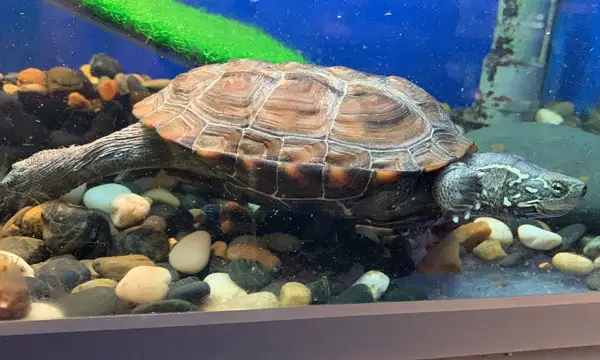
Some people might find reeves turtles cute, but others may not. If you’re one of the latter, it’s probably not a good idea to keep this turtle as your pet.
Full grown reeves turtles are often considered invasive exotic species in many parts of the world. They can bring harmful diseases with them when imported into new environments.
Additionally, these animals are known for their aggressive behavior and sometimes attack humans who approach them improperly.
What Does a Reeves Turtle Need in a Tank?
A reeves turtle needs live plants, fresh water, and a basking area to help it regulate its body temperature. It also needs hiding places to rest throughout the day and a place to do business.
Live food is necessary for eating and should be fed twice per week – once in the morning and once at night. The basking area should have an ambient light level of 75-100 lux (lukewarm sunshine), while the tank’s water should be crystal clear.
Reeves Turtle’s Potential Health Issues
Reeve’s turtles are tricky. Most trade specimens are bred in captivity, reducing parasite risk. Poor diets and environments can still harm Reeve’s turtles. Avoid shell rot—a horrible condition. Bacterial and fungal diseases induce carapace pitting. It can crack in extreme circumstances. Bacteria can enter the body deeply as the condition progresses.
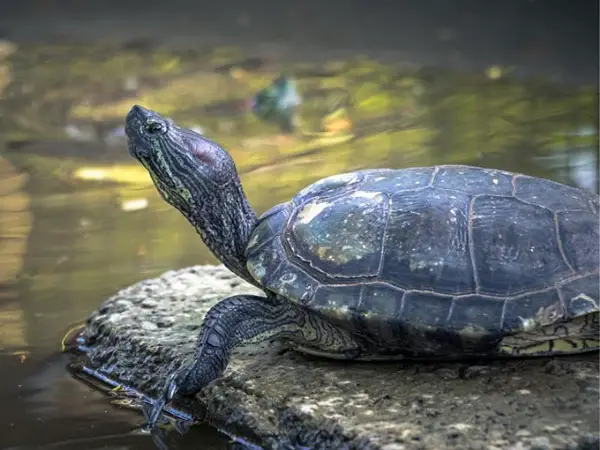
Beware of metabolic bone disease. Turtle bones can become brittle without calcium or UVB exposure. Turtles’ shells make it worse. Luckily, both disorders are preventable. Clean your tank often. Give your turtle UV light and a portion of calcium-rich food.
Conclusion
As you can see from the information we have shared above, keeping a turtle is not as hard as it seems. Follow all the steps mentioned above and beyond in this article. There should be no reason for turtle owners to face health or behavioral issues.
Remember that they are sensitive when it comes to their environment and diet. Thus, ensure you have everything correctly set up before introducing your new pet into its new home. Also, ensure they get sufficient time outdoors to visit the beautiful world around them!
